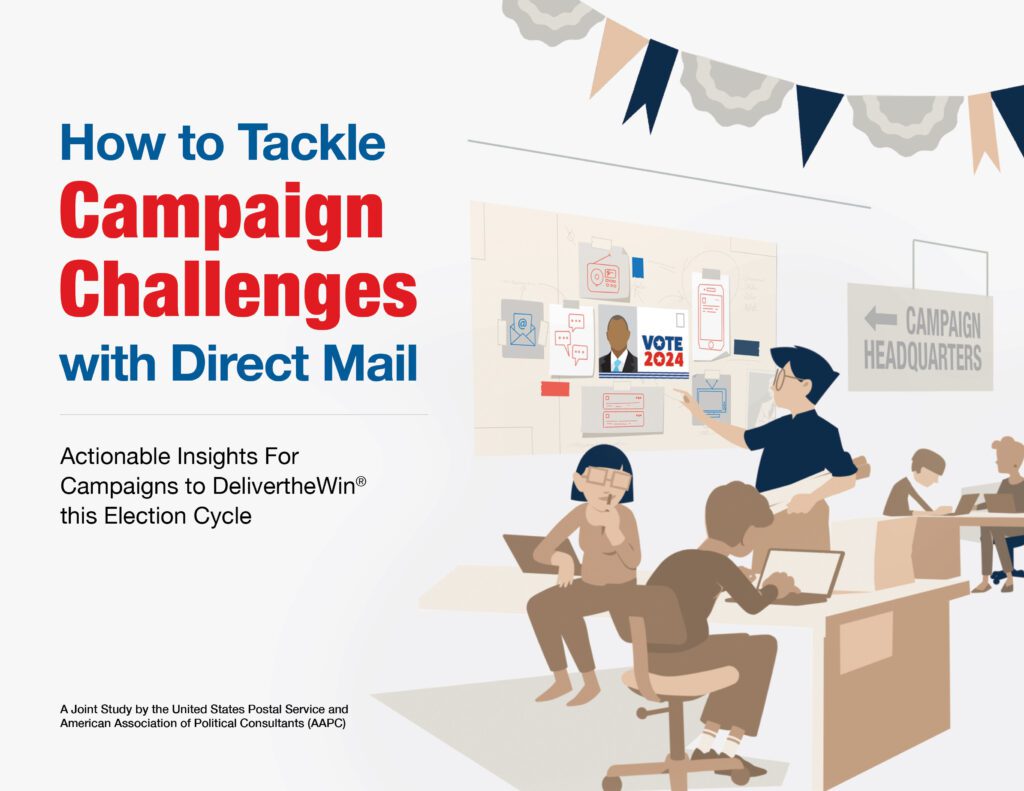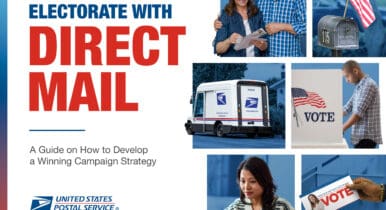What to Know Before You Mail This Election Cycle


The 2024 Election cycle will be driven by an American electorate that is closely divided and increasingly skeptical of what they hear, see, and read in their day-to-day lives. Campaigns will be faced with the challenge of engaging with potential voters who have become harder to reach as their media consumption behaviors continue to evolve and relationships with certain targeting tactics weaken.
The United States Postal Service® conducted in-depth interviews and surveys following the 2023 elections to capture the unique challenges and perspectives of consultants. Post-election voter surveys were also conducted to measure how the voter relationship with direct mail can be the solution to these challenges through tailoring, timing, and targeting.
Here are some of the actionable insights to help fuel a winning campaign strategy with direct mail.
Breaking through to voters requires the right mix of physical and digital.
- Fifty-seven percent of surveyed voters feel that direct mail was harder to ignore than online and television ads.
- Surveyed consultants recognize this, with direct mail making up 26% of their media mix – more than any other political advertising channel.
- Many surveyed voters take action after receiving direct mail. Fifty-nine percent look at websites or sources mentioned in the mail piece. Thirty-eight percent scan the QR Code. And 62% search online to learn more about that race.
Getting the Most Out of Direct Mail– The integration of technology on a mail piece enhances the informational potential of direct mail by providing an opportunity for the potential voter to engage with additional digital campaign resources. Fifty percent of surveyed voters reported receiving a QR
Code® (QR Code is a trademark of Denso Wave Incorporated 2024). in a political mail piece – and 36% used it to verify or fact-check information that they read in the mail piece.
Campaigns rely on reaching voters at the right moment.
- Seventy-nine percent of surveyed voters prefer to receive direct mail at least a month before election day.
- Forty-two percent of surveyed consultants believe direct mail should be sent twice a week to be most effective.
Getting the Most Out of Direct Mail– PS Tag 57 (“red tagging”) – a red container tag used to identify political mail and provide greater visibility to trays, sacks, and pallets of First-Class Mail® and Marketing Mail items as they go through USPS processing and distribution operations. This red tag increases visibility and instills confidence in the timing of political mail pieces during the election cycle. Sixty-five percent of consultants surveyed use Tag 57 all the time for political mail campaigns.
Precise targeting and segmentation, along with personalized messaging, increases the likelihood of engagement.
- Personalization is critical across demographics – 65% of surveyed Black and Hispanic voters confirmed the importance of personalization of direct mail.
- Thirty-eight percent of surveyed voters believe campaigns can increase the likelihood of voter engagement by including personally relevant information.
- Twenty percent of surveyed voters believe personally addressing the mail piece increases the likelihood of voter engagement.
Getting the Most Out of Direct Mail – The Postal Service’s Informed Delivery® Feature allows campaigns to personalize interactions with voters beyond the traditional mailbox. Daily direct mail previews are sent to roughly 30% of the 60 million+ households signed up for this service. Check out this interactive map to see the number of registered Informed Delivery users by state and ZIP Code™ areas.
Visit DeliverTheWin.com to see exactly how direct mail can help you conquer the campaign trail this election season.
The actionable insights captured in our latest annual white paper will help campaigns crack the code to better understanding how to effectively influence, resonate, and motivate voters – and turn challenges into opportunities this election cycle.
Voter & Consultant Insights Sourcing: All 2023 election data sourced from consultant interviews and post-election surveys conducted on behalf of the Postal Service™ by Summit Research from September 2023 through January 2024.


